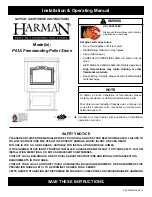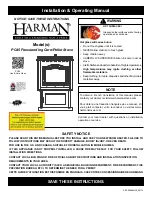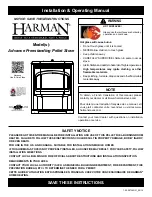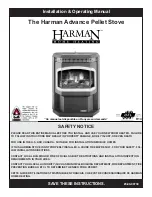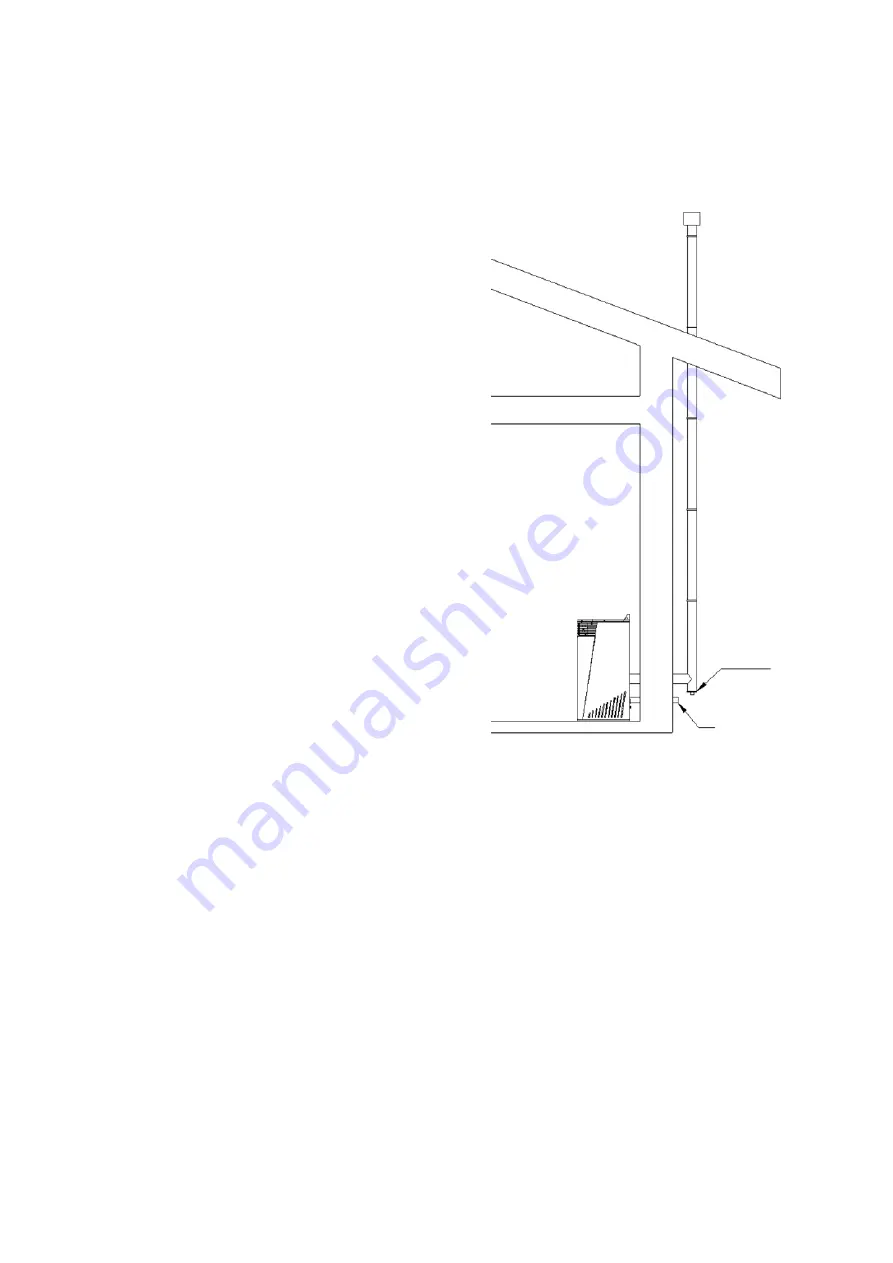
Flue
The flue of a pellet stove is a very important component because it affects the correct working of the stove.
The flue must be needed only for the stove and cannot be shared with other devices; you can’t make fixed
or movable openings to connect other air adduction pipes and pipes for plant-engineering use.
The flue must be provided with a chamber for the
gathering of solid materials and possible condensations,
placed under the entrance of the flue outlet duct, so that
you can easily open it and inspect it from an air-tight
small door.
The installer has to make sure that the opening do not
cross flammable materials, or in the absence of alternative
solutions, he has to use an insulating protection on the
pipe (with wall junctions with a diameter of 13 cm at least,
insulating the pipe with insulating materials 1,5-5 cm
thick, with a suitable thermal conductivity), even though it
passes near flammable materials (minimum distance 200
mm).
As for the assembly of the pipes you must always use
pipes and junctions with hermetically sealed gaskets.
It’s important that the curvature of 90° provides for a T
junction with inspection; it is advisable to use curves of
45°.
Using nets or filters at the extremity of the flue or any
extremity which could turn into a nest is forbidden. Use
only extremity in accordance with the regulation.
The horizontal segments must have a minimum inclination of 3% upward.
As for the connection of the flue, the horizontal segment must be minimum and you mustn’t exceed 3
meters, the number of direction changes, including that as a result of the use of the T element, mustn’t be
bigger than 4, never exceed 6 m of pipes, use curves of 45° and obey the regulations UNI 10683, using
pipes in accordance with the law.
Examples of connections with isolated and non-isolated external pipes
Connections that include the use of pipes not larger than 20 cm in diameter, which must have at the base
an inspection system and a forced draught minimum 10 Pa. The internal section must be uniform,
preferably circular; the sides of the pipe must be smooth as much as possible and without narrowings; the
curves must be regular and without discontinuities; the pipes mustn’t be subjected to deviations from the
axis higher than 45°.
It is compulsory the installation of a windproof roof in accordance with the regulations. The T inspection,
placed at the base, can also be placed inside the house (better if external).
Inspection
External air intake
Summary of Contents for Euro Alpi Vezzana
Page 1: ...Use and maintenance manual for pellet stove...
Page 42: ...16 Notes...
Page 43: ...Notes...



























